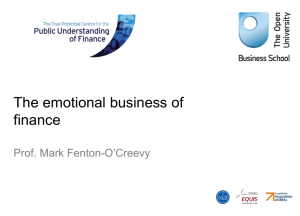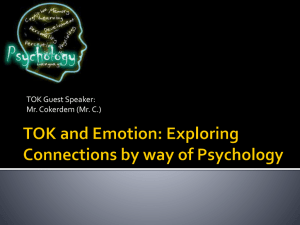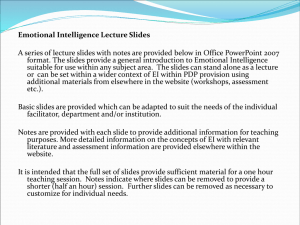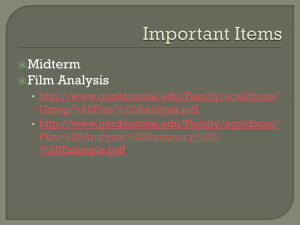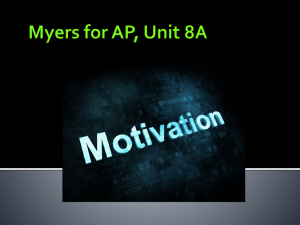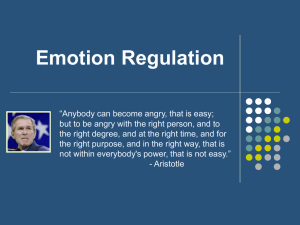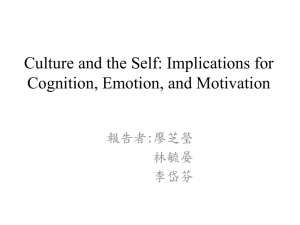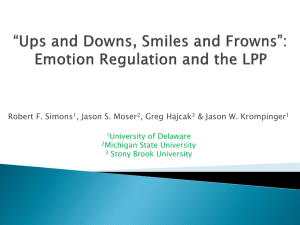EMOTION - TOK
advertisement
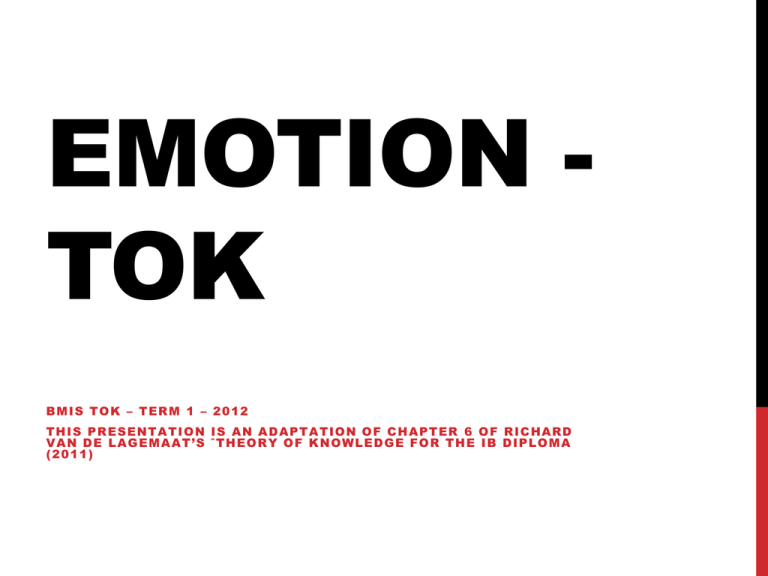
EMOTION TOK BMIS TOK – TERM 1 – 2012 T H I S P R E S E N T A T I O N I S A N A D A P T A T I O N O F C H A P T E R 6 O F R I C H A RD V A N D E L A G E M A A T ’ S ˆ T H E O R Y O F K N O WL E D GE F O R T H E I B D I P L O M A (2011) EMOTION Before this class, did you typically think of emotion as one of the ways of knowing? When you make decisions, do you use emotions to do so? Does this change for different types of decisions? Explain Discuss in your groups – 5 minutes PRIMARY EMOTIONS Happiness Sadness Fear Anger Surprise Disgust People identify these with faces depicting them all across the world Children born deaf and blind naturally show them. But are there differences by culture on how much they are shown? JAMES-LANGE THEORY “the emotions are essentially physical in nature, and bodily changes come before, and cause, emotional changes.” (de Lagemaat, p. 148) So the idea is that if you take away the physical symptoms then the emotion goes away. Also you can create an emotion by copying the physical symptoms. When you EMPATHISE with someone you take on the physical symptoms – the mood. BUT IS ALL THIS TALK TOO PHYSICAL – our beliefs are involved too – de Lagemaat argues this is how we are different from a dog. http://www.google.mw/imgres?imgurl=http://upload.wikimedia.org/wikipedia/en/archive/f/f4/20090829082327!Th e_Scream.jpg&imgrefurl=http://en.wikipedia.org/wiki/File:The_Scream.jpg&h=1052&w=813&sz=150&tbnid=p93 zxVwuY_9qyM:&tbnh=90&tbnw=70&zoom=1&usg=__eYEC3tHcKQVzoxbHWqGJx5ruS4I=&docid=FPvV0qo5l Yz_nM&sa=X&ei=T-ipUNmjFqGb0QWluYC4Cg&ved=0CCIQ9QEwAA THE SCREAM BY EDVARD MUNCH How do you respond to the emotion in the painting? If the human was a dog, how would you respond? SOCIAL EMOTIONS HUMANS Ambition Contempt Embarrassment Envy Gratitude Guilt Indignation Jealousy Pride Shame Sympathy EMOTION – THE STUFF OF ENERGY Emotion gives us energy to get things done Thomas Edison: “Genius is one per cent inspiration and ninety-nine per cent perspiration.” Academic work is often not thrilled with excitement but marked by lots of hard work, failure and boredom with a later pay-off. EMOTIONS AS WOK Emotions – obstacle to knowledge Emotion – source of knowledge Intuition OBSTACLES Distorts our other ways of knowing: • Perception – emotional colouring – “love is blind” • Reason – “my way or the highway” • Language – use emotional and biased language Rationalisations • What do we do when we rationalize? • Examples? • The story of the fox and the grapes (p.152) • The cigarette smoker • Test was unfair!!!! OBSTACLES IRRATIONAL BEHAVIOUR Do we act rationally? As consumers? How do economists see us? Stoics – ancient philosophers – focused on the idea of “apathy” – “without passion” But what would life be like if there were no emotions? EMOTION – SOURCE OF KNOWLEDGE What about Spock? De Lagemaat presents Steven Pinker’s view of Spock as being in control of emotions rather than without emotion. Research on those with brain damage resulting in no emotion – psychologist Antonio Damasio – patient who had brain damage to emotion – could no longer make decisions. Emotion – Reason – a continuum – we can gauge how rational our emotion is. ARISTOTLE (384-322 BCE) “Anyone can be angry – that is easy. But to be angry with the right person to the right degree, at the right time, for the right purpose and in the right way – that is not easy.” Two examples from Lagemaat – p. 157 INTUITION What do you think intuition is? Discuss in your groups. Core intuitions – the basic ones about life, etc. Subject-specific intuitions – in areas of knowledge Social intuitions – about people


